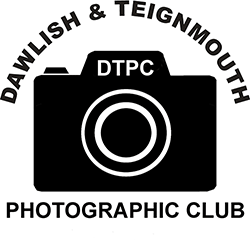Members of the Dawlish & Teignmouth Camera Club tuned into Zoom in record numbers to hear all about the world of covert photography and undercover surveillance from former Royal Marine Commando, Pete Jenkins.
Pete, who has written several books on the subject, now runs his own surveillance training company in North Yorkshire, providing specialist covert surveillance, intelligence and investigation training courses worldwide. His team comprise former Military Intelligence, Special Forces, Police and Enforcement surveillance instructors.
As an aside, he also dropped in that he is a Photojournalist, saying that the National Union of Journalists’ Press Pass helps to get him into places, and out of them if things go awry!

Pete ran through a variety of cases he has been involved with and showed the type of imagery and, sometimes video, that was needed for evidence to enable the clients to take the perpetrators to court (certain images were re-created for the presentation so as not to breach client confidentiality).
For one of the cases involving theft of diesel, Pete had to carry out an advance recce of the location in order to find a suitable vantage point - this ended up being in a disused chapel where he then set up several metres of scaffold in order to reach a lookout from the crucifix window. Another case concerning counterfeited soft drinks required close surveillance of a group of people to track where they were getting the authentic boxes, how they were swapping the drinks and the distribution chain.
Throughout the talk, Pete explained about the technical kit he used, including his go-to cameras for specific tasks. His main camera is the Canon EOS 5D MkII with 24-70mm lens and 70-200mm lens. The one he chooses for long-range work is the Canon 7D MkII. Whereas for surveillance work, he favours the Fujifilm XT4 as it is lightweight and easy to travel with.
Surveillance and photographing the subject can be done on foot, as a pillion on a motorbike, or from inside a car – but each have their difficulties. For example, taking a sharp image through the windscreen or side window of a car is very difficult, but you could risk compromising yourself if you rolled down a window. He gave plenty of tips on focussing and stressed how vital it is to have sharp images of the person’s face, as well as catching them in the act – these are known as ‘the money shots’.
One of the most surprising elements of Pete’s talk was about hidden cameras and the ingenious ways they are incorporated into everyday items. Think twice if you see someone pointing a take-away coffee cup with lid in your direction, or placing a bottle of water on the table!
Being based in North Yorkshire with the Dales and Moors nearby, Pete confessed to having a passion for wildlife photography and described the similarities between this and covert photography – finding cover; keeping hidden; waiting patiently; using a telephoto lens; and taking multiple shots to capture action.
At the end of his talk, Pete laid down a photographic challenge for members to take ‘spy’ photos – the winners to receive a copy of his international bestselling book Covert imagery, photography and video.
If you are interested in photography and like the thought of hearing from a range of interesting and entertaining guest speakers, you can find out more here: Dawlish & Teignmouth Camera Club.

Comments